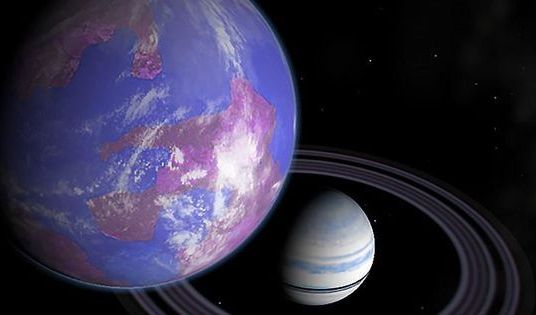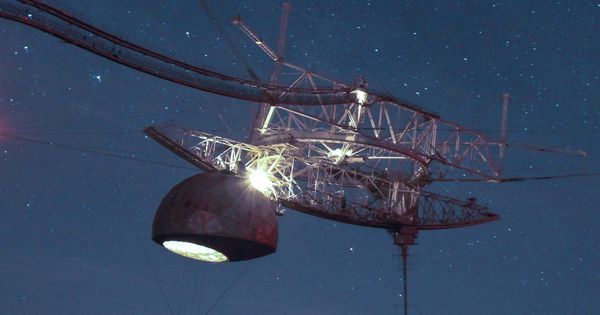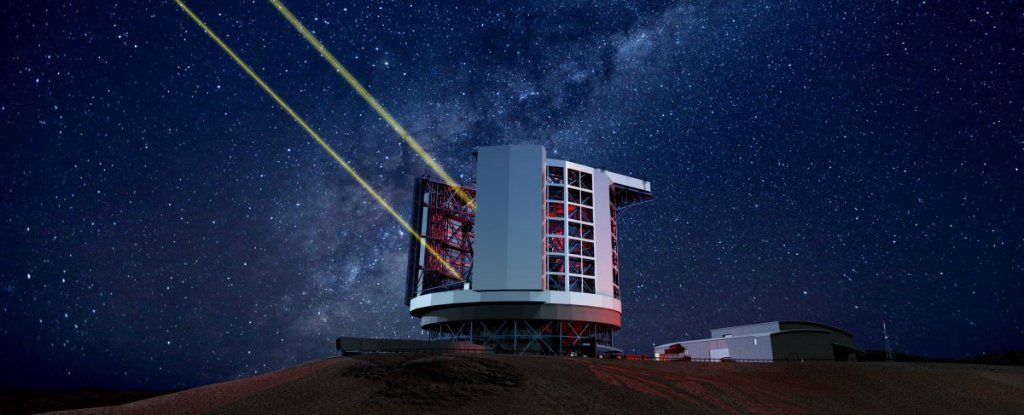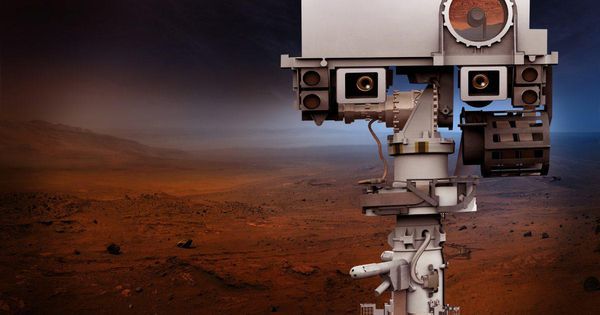Maybe AI is talking to AI?
ARTIFICIAL intelligence has helped scientists find mysterious signals from deep space and experts hope it could help decipher whether the signals are a result of extra-terrestrial technology.


4K — This is stunning! 🤪🤩💫 Goodnight, Earthlings! Credit video: Adrien Mauduit Films.
There’s something fascinating about our own home galaxy. Even if we still cannot look at it from above and gaze at the full span of its arms, the sideway view offers a quite a showdown. To me the central part of the milky way is the most spectacular sight of the night sky. It’s something you can clearly see with the naked eye when you are away from city lights. It’s a sight that really brings your down to Earth and lets you wonder at how small we are, while comforting you in the thought that you are part of this Earth and the Universe. I could gaze for hours at the central bulge and just contemplate its compelling beauty from where it rises till where it sets. From a photographic and scientific point of view, this part of the milky way is so interesting to capture and study because if our solar system is located in its suburbs, the downtown district of our home galaxy harbors billions upon billions of stars. They are so concentrated that the total light coming from them can be seen millions of light years away and really creates this halo of light visible when you take a picture of it, much like a fire blazing. However a thick blanket of dark hydrogen clouds shroud and block the complete view. You can even see these fine dark lanes with the naked eye and they really participate in making the whole picture something from another world. Of all of them the Pipe and Dark Horse nebulae are descending down the core obscuring the upper part of the central bulge. In addition to this celestial show many emission nebulae- reliques of previously exploded stars, pepper the disc. Among them the bright and colorful Lagoon nebula, the pink and blue Trifid nebula, the red Cat Paw, War and Peace and Prawn nebulae around Scorpius. Moreover many star clouds (like the Sagittarius star cloud) and other remarquable star clusters also participate in strewing this already full frame. Finally the closest stars (like Antares) and near planets visible during the time of shoot (Mars, Saturn, Jupiter) also give a sense of just how ridiculously big the distance between Earth the core is.
Being fascinated by the core since I started astrophotography where it was barely visible (Denmark), I started looking for the best places in the northern hemisphere where I could get a clear view. The first time I really saw it was on the beautiful island of Tenerife 4 years ago and I sincerely will remember that experience for the rest of my life. Gazing upon the center of our galaxy in its full glory is something everyone ought to try. That’s why I decided to dedicate the third opus of my astrolapse series ‘Galaxies’ exclusively to the core, assembling my best clips to date and bringing them to the public, mainly to raise awareness and to get our night sky a bit more attention. I was appalled by just how many people have never seen the milky way so maybe by showing the true beauty of the universe I could contribute in my own limited way to bringing the real dark skies to the hectic and light polluted urban jungle.
The goal once again was to use the best techniques in astrophotography and time-lapse to exploit each frame to its maximum without compromising the quality. From planning, to traveling to remote locations, to shooting with some of the best astro-gear, and eventually finding a novel post-processing workflow, I was able to get some astounding and never-seen-before sequences of the core. Traveling to very elevated and dark places allowed me to get the best signal to noise ratio as well as the best ‘contrast effect’ in the halo created by the stars in the bulge. The array of extremely sharp and bright lenses I utilized permitted to decrease shutter speed and get less motion blur while getting extremely clean shots with little aberration.

Lowell interviews the always fascinating Professor George Church in this new podcast series about aging research. Lifespan.io will be appearing on the show soon too so watch this space bigsmile
Harvard & MIT Professor, author of Regenesis, methods for 1st genome sequence (1994) & 10M-fold improvements (NGS, nanopore), genome editing, writing and recording. In this episode, we get to talk about Genghis Khan, Woolly Mammoth, storing data in DNA, advice for people getting started, and more all in under one hour!
George is one of the most interesting and down to earth people you’ll read about (might be from the future or an alien, but cannot confirm). He is always working to make all of our lives better. Anytime you are looking for inspiration, do what I do, and learn about what he and his team are working on. I always feel like I can do anything after reading or listening to the current things he is working on. I hope to one day contribute like he does! As a side note: I am working on something that was inspired from our discussion, so we shall see how that goes. If anyone is inspired after listening to him talk, please email me and let me know. We can start a fan group around George and scientists in general. Scientists are the unsung superheros of our society! Also, scroll down to the bottom to see the breadth of his work. I felt like it should be put here in it’s entirety. Hyperlinked show notes will go up tonight for this episode and the previous ones that are lacking them!
“George Church, professor at Harvard & MIT, co-author of 480 papers, 130 patent publications & the book ”Regenesis”, developed methods used for the first genome sequence (1994) & million-fold cost reductions since (via NGS and nanopores), plus barcoding, DNA assembly from chips, genome editing, writing & recoding. He co-initiated the BRAIN Initiative (2011) & Genome Projects (1984, 2005) to provide & interpret the world’s only open-access personal precision medicine datasets.

Rather, they looked like whirlpools in space-time. In the universe, every part of space flowed, churned, trembled between madness and horror like fiery flames that emitted only frost. The Sun and the planets and all substance and existence seemed to be only hallucinations produced by the turbulence of space-time.


An urban utopia on Mars might be closer than you think.
For the past year, creative professionals, students, space geeks—even families—have been creating their visions for a metropolis on the fourth planet from the sun. The final winners of the HP Mars Home Planet challenge were announced today by HP and unveiled in a VR experience at SIGGRAPH 2018, an annual computer graphics convention, in Vancouver.
“The amazing entries from the HP Mars Home Planet challenge give us a virtual window into what life on Mars could be like for a million members of humanity,” says judge Dr. Darlene Lim, a geobiologist and principal investigator, NASA Biologic Analog Science. “Technological advancement is being met by a broad array of foundational space science and planetary research—a confluence that will optimistically serve to accelerate our path toward human exploration and settlement of Mars.”

In astronomy, cutting-edge technology often begins with a bunch of bulldozers, busted rocks, and dump trucks.
So it goes with the Giant Magellan Telescope (GMT), which will be the world’s largest and most powerful when it sees “first light” in 2024. Astronomers hope to use the huge observatory to study the ancient universe and look for signs of alien life.
Construction crews atop a Chilean mountain range broke ground for the $US1 billion project on Tuesday.
Finding alien life on a distant planet would be amazing news — or would it? If we are not the only intelligent life in the universe, this probably means our days are numbered and doom is certain.
